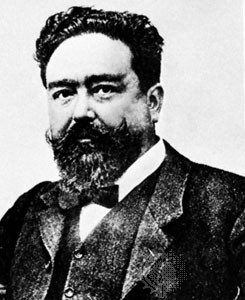Served with a sauce of mushrooms, tomatoes, olives, oil and wine
Chicken Marengo (despite the otherwise-sounding name) is a French dish consisting of a chicken sautéed in oil with garlic, tomato and garnished with fried eggs and crayfish. While the dish is somewhat similar to chicken a la Provençal – there is the addition of fried eggs and crayfish.
The story is that the dish was created to commemorate the Battle of Marengo – a victory of Napoleon in June 1800. As history states, the dish was created by chef Dunand after the battle of Marengo near Turin, Italy. As supplies were scarce, he was forced to make a dish with the local supplies available. Like many legends, it is said that Napoleon savored the new creation so much that he asked for it to be made after every battle. Later on, supposedly, Dunand, with better supplies wanted to add mushrooms and wine, but Napoleon refused, being rather superstitious.
These days, other culinary historians are quick to add that tomatoes were probably not available at the time, and earliest renditions of the recipe do not include them. Then again, who are we to argue with Napoleon, n’est-ce pas?
Spanish composer Isaac
Don’t you just love the Spanish with their names? Who’s to say what their actual last name is? So here goes for today’s answer: Isaac Manuel Francisco Albeniz y Pascual — whew! Can you imagine today’s waiting room with that name? It would take longer than the actual office visit!
Enough with the long last name – just who was this Albeniz fellow? Well, to start with he was a Spanish pianist and composer who in his later years was best known for his works based on folk music. Many of his pieces have been used with classical guitar, although he never composed for the guitar.
Born in Girona, he was a child prodigy from early days, performing at the age of four. At age seven, he actually passed the entrance exam for the Paris Conservatory but was refused admission because he was too young. By the age of nine, he was touring Europe with his father (a customs official – how convenient!) By age 15, he was known worldwide.
At age 16, he went to study at the Royal Conservatory of Brussels after King Alfonso’s personal secretary issued an invitation. He continued to study with many, including Liszt and Felip Pedrell, reaching his peak in 1889 to 1892 when he again toured throughout Europe. He lived out his final years in France which had awarded him its highest honor, the Grand-Croix de la Legion d’honneur.

